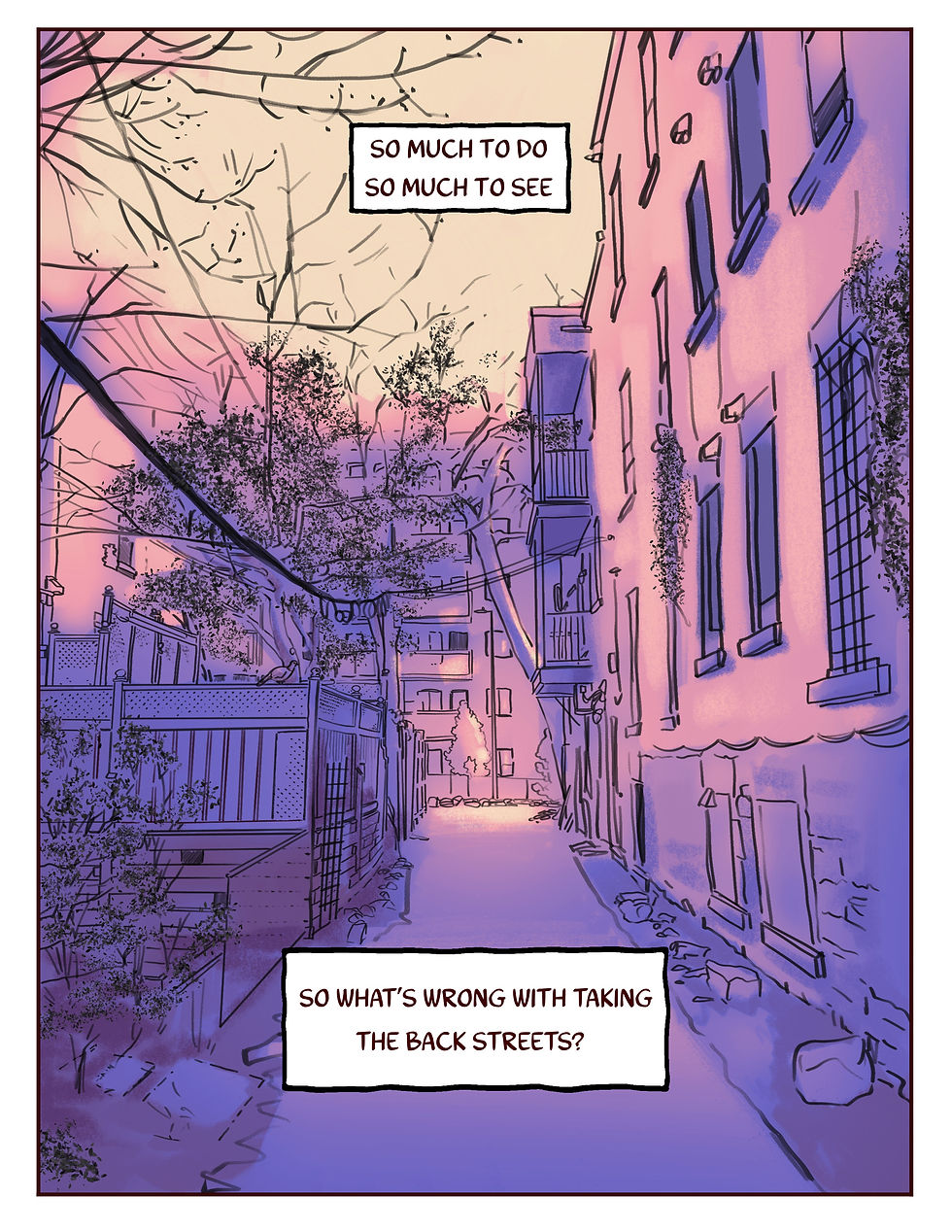On the inside looking out in non-spaces
- David LeRue
- Jul 17
- 3 min read
Despite my 'project' for the summer of fieldmaking focusing on interiors (several posts to come...), a consistent focus of my interior drawings has been the looking out part. Indeed, for many of the cafés and third spaces I go to, the outside permeates the inside. Whether it be complex networks of plants, extreme light, or a good view of the street, the outside becomes just as important of consideration to the space as the arrangement of the interior itself.
Third-wave cafés have a habit of trying to present themselves out of space and time, as proverbial non-places. I will follow-up on the philosophy of non-places later, but in short, they were first articulated by philosopher Marc Augé (2020) as spaces that are becoming increasingly standardized under global capitalism. The quintessential example is the airport, which have standard designs throughout the world. In terms of urban renewal and gentrificaiton, businesses and places that were once specific to place are often replaced by chains, chic non-place restaurants, and, of course, third wave cafés. In the above video taken at a third wave café on a trip to Paris two years ago, one can see the outdoor space as typical cobblestone Parisian street. But upon entering, the aesthetic is a carefully curated collection of marble, magazines, and a greay palette. As art educator Joy G. Bertling (2018) questioned, how can we have a place-based art education in a world where spaces themselves are becoming increasingly standardized? These questions underpin this post, even as it does not specifically address them.

The above Parisian café is an extreme example of a third-wave café aesthetic, but it represents the tone for an international standardization of cafés/ Take for example the above image, a café in my own neighborhood that while aligning itself with the third-wave tradition, certainly retains the specificity of its nearly 100 year old building. Nevertheless, substantial effort has been made to fit with the clichés of the third-wave aesthetic, including the hanging bulb lamps that are hanged with faux floral ivy, and several plants. The image was striking not only due to the floral arrangements and the rather shabby hardwood floors, but the way the logo of the business created a perfect outline on the chair. I often find myself working here as a way to get out of the house, and in mid-afternoon, the light fills the space with blinding light and shadows.
I never cease to be fascinated with the third-wave movement, and I criticize even as I am an active participant. I like good coffee, I like hanging out on my laptop, and I like seeing plants indoors, likely because I have never been able to keep one alive myself. But I do find myself depressed with the drab sameness of it all: the fascination with neutral colours, the uninspired glass cases and whatnot. What attracts me to the café in my neighborhood is that it avoids being outrightly boring.
In other third-wave cafés, I often find myself instead looking out the window. Take for example the painting below at a café near the Shaughnessy village. In the basement of an office building, this one adheres to several drab third-wave tropes. So I painted out the window instead.

In the painting above, I used Arttools oil paint on watercolour paper to capture the view outside, looking at St. Jax church next to Concordia University. Some tropes of the café were present, including the wall colour and the flat graphic design painting in the top left. The white vinyl appeared blue, with coffee beans and the company logo overtop of a construction site outside. This part of downtown is rather unkept, with several construction sites and patio spaces set up haphazardly for summer. The rainbow looking thing in the middle-centre covers some of the work on the façade of St. Jax.

The second painting captured plants both inside and outside, amid a messy sidewalk scene that included a stereotypical orange Montreal cone. The chair cut the scene into sections, creating some visual interest that framed the overall look. Despite efforts to ignore the specificity of place, the outside fights off international standardization.
Bibliography
Augé, M. (2020). Non-places: An introduction to supermodernity. Verso Books.
Bertling, J. G. (2018). Non-place and the future of place-based education. Environmental Education Research, 24(11), 1627-1630.



Comments